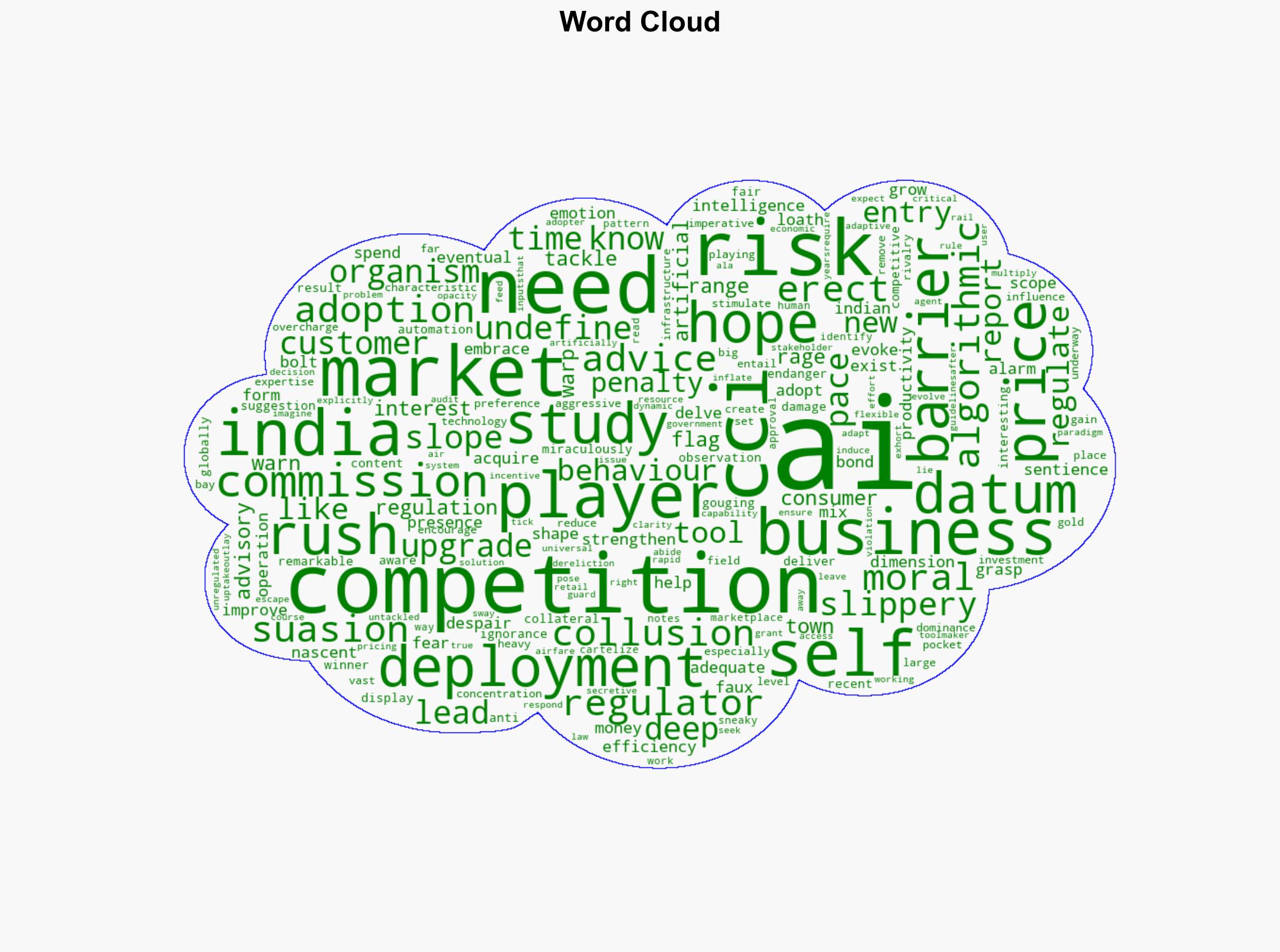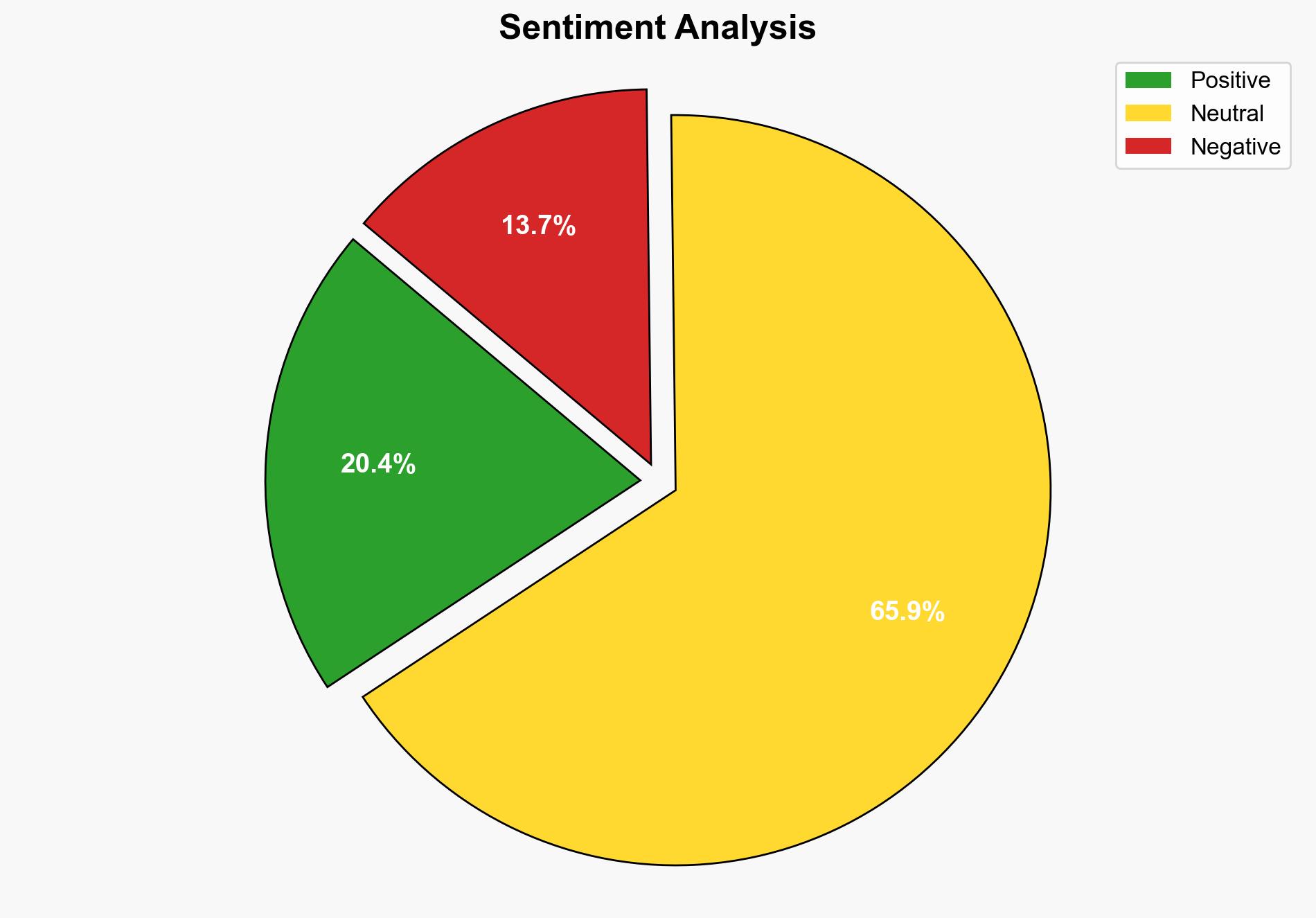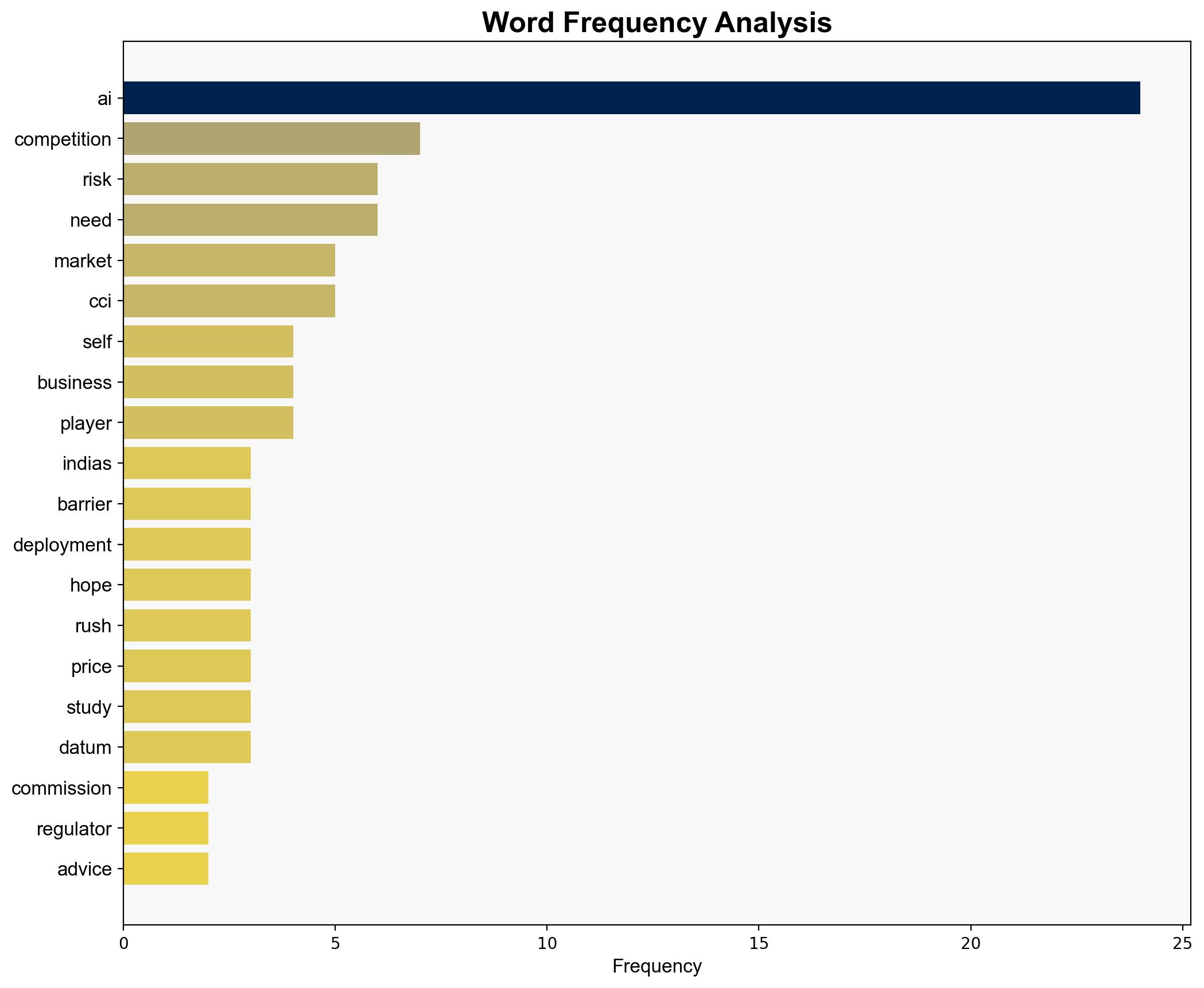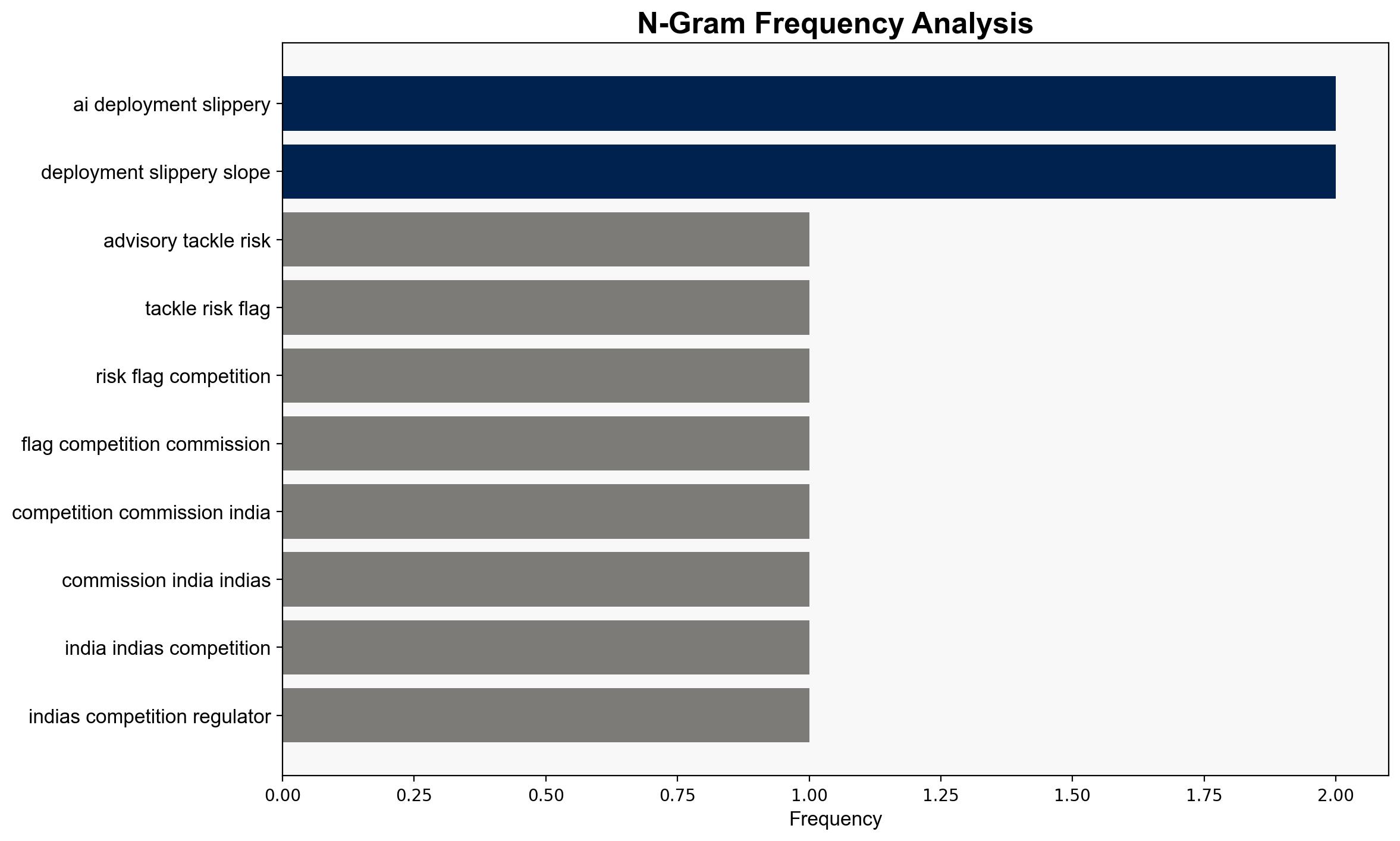Is an advisory enough to tackle risks flagged by the Competition Commission of India – Livemint
Published on: 2025-10-08
Intelligence Report: Is an advisory enough to tackle risks flagged by the Competition Commission of India – Livemint
1. BLUF (Bottom Line Up Front)
The most supported hypothesis is that the current advisory from the Competition Commission of India (CCI) is insufficient to mitigate the risks associated with AI deployment in the market. The strategic recommendation is to develop comprehensive regulatory frameworks that include clear guidelines and penalties for non-compliance. Confidence Level: Moderate.
2. Competing Hypotheses
Hypothesis 1: The advisory issued by the CCI is adequate to address the risks posed by AI in the market. The advisory’s emphasis on self-regulation and moral suasion will incentivize businesses to comply voluntarily, thus mitigating risks like algorithmic collusion and market concentration.
Hypothesis 2: The advisory is inadequate, and without enforceable regulations, the risks of AI, such as market barriers and algorithmic collusion, will persist or worsen. The lack of clear penalties and guidelines will lead to continued dominance by large players and potential consumer harm.
Using the Analysis of Competing Hypotheses (ACH) 2.0, Hypothesis 2 is better supported due to the historical ineffectiveness of self-regulation in similar contexts and the rapid pace of AI adoption, which outstrips the advisory’s capacity to enforce compliance.
3. Key Assumptions and Red Flags
Assumptions:
– Hypothesis 1 assumes businesses will act ethically and prioritize long-term compliance over short-term gains.
– Hypothesis 2 assumes that without strict regulations, businesses will exploit AI for competitive advantage, disregarding ethical considerations.
Red Flags:
– The advisory lacks specific enforcement mechanisms, which is a critical oversight.
– Potential bias in assuming businesses will self-regulate effectively without external pressure.
4. Implications and Strategic Risks
The unchecked deployment of AI could lead to significant market distortions, including monopolistic practices and reduced consumer choice. Economically, this could stifle innovation and lead to higher prices. Geopolitically, it may set a precedent for inadequate AI governance, influencing global AI policy standards. Psychologically, consumer trust in AI-driven services may erode, impacting adoption rates.
5. Recommendations and Outlook
- Develop a robust regulatory framework with clear guidelines and penalties for AI misuse.
- Encourage stakeholder engagement to ensure diverse perspectives in policy formulation.
- Scenario Projections:
- Best Case: Comprehensive regulations lead to a balanced AI market with fair competition.
- Worst Case: Lack of regulation results in monopolistic practices and consumer exploitation.
- Most Likely: Partial regulation leads to some improvement, but significant risks remain.
6. Key Individuals and Entities
– Competition Commission of India (CCI)
– Major AI technology firms operating in India
7. Thematic Tags
national security threats, cybersecurity, economic regulation, AI governance, market competition




